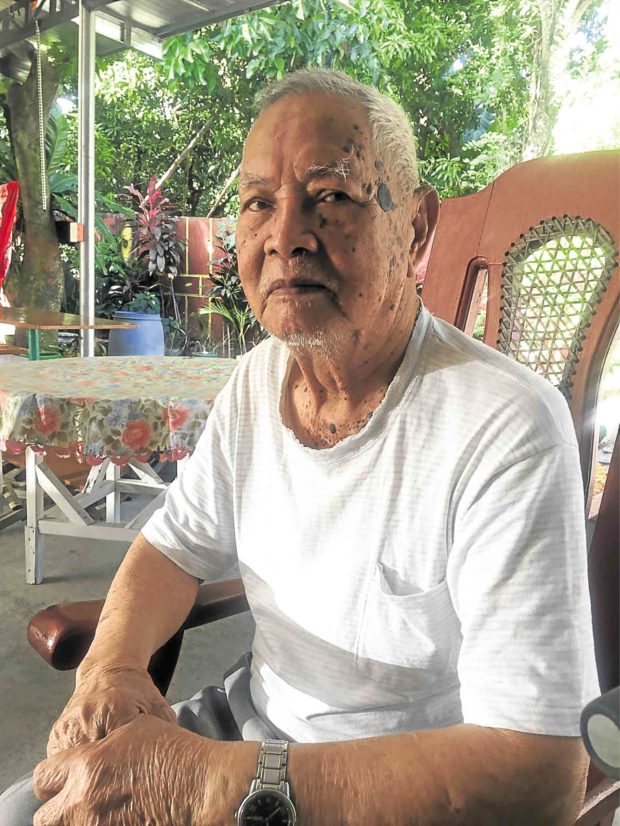
In his twilight years, former Huk fighter Arcadio Ramos still has a story to tell. —TONETTE T. OREJAS
LUBAO, Pampanga — Arcadio Ramos, who turned 93 years old on Jan. 12, is the only surviving former guerrilla of the Hukbo ng Bayan Laban sa Hapon (Hukbalahap) in his village of San Vicente and probably among the few left in this town.
His advanced age and experience means Ramos is also a living testimony of the courage exhibited during the “Battle of San Vicente” for a generation that has never even heard of World War II.
Television travel show host and producer Abel Cruz said he heard only fragments of that story of bravery as a child growing up in Lubao.
Ramos became a Huk in August 1942 when he was just 17 years old. He served as an intelligence officer, with a rank of lieutenant, in the second platoon of Company C, Second Battalion of the 7th Regional Command, first under Abelardo Dabu, alias Senti, and then under Ignacio Dabu.
Squadron 18
His last commander was Silvestre Liwanag, alias Linda Bie, according to declassified Hukbalahap files of the Philippine Archive Collection (PAC) from the US National Archives.
Liwanag, speaking on behalf of Huk leader Luis Taruc in 1979, attested that Ramos served in the Hukbalahap’s department of intelligence of Squadron 18, one of the pioneer units, according to records from the Philippine Veterans Affairs Office.
Squadron 18, which operated in western Pampanga and Bataan, was made part of Military District (MD) 5. It was merged with MD 1 led by Bernardo Poblete, alias Jose Banal, to form the 7th Regional Command.
Unlike the Banal regiment that kept written accounts and maps, Squadron 18 or MD 5 did not have records of battles in the PAC.
By his reckoning, Ramos, who used the nom de guerre “Liwayway (Sunrise),” said the Battle of San Vicente might had happened sometime in 1943. It began when 15 fighters of Squadron 18 ambushed 10 Japanese soldiers in Sto. Domingo, a village across a river in San Vicente.
Nine of the Japanese soldiers were killed. But the Japanese Army sent reinforcements via railway that linked the Pampanga Sugar Mill (Pasumil) central in Del Carmen, Floridablanca town, to what is now Sitio Tramo in San Francisco beside San Vicente.
Huks stand in formation to register their firearms with the US Army in what was then San Fernando town when World War II ended. —PHILIPPINE ARCHIVES COLLECTION
Ramos and his comrades, augmented by reinforcements sent by Liwanag, mounted a surprise attack that lasted until nighttime, killing dozens of Japanese soldiers.
“After those two consecutive fights, the villages were at peace,” said Ramos, adding that he joined the Huks to fight the atrocities of the Japanese invaders, especially the rape of women and girls.
Squadron 18 also looted Pasumil for sacks of sugar to give to barrio folk, and burned two Japanese planes in Landing (now the Basa Air Base in San Jose, Floridablanca).
Captured by the Japanese, his father, Crescencio, did not reveal his son’s whereabouts even after torture for which he suffered a brain hemorrhage.
Ramos left the Huks in December 1945, joining the police force in the time of then Gov. Jose Lingad and later as security aide of then President Diosdado Macapagal.
“When I’m alone and I recall the past, I wonder why I am still alive. I credit that to civilians. They protected us Huks,” said Ramos, who raised 11 children.